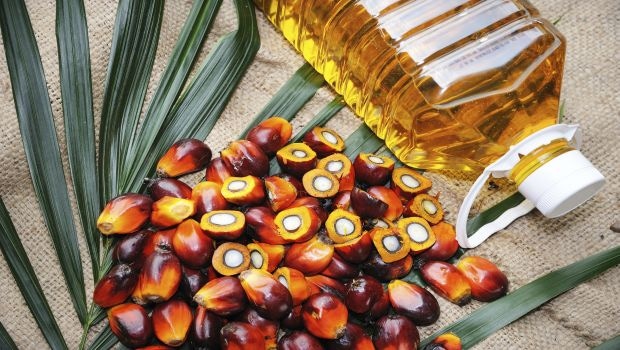Natural, non-GMO, sustainably produced and balanced fat composition—these are all words increasingly used to describe Malaysian sustainable palm oil. According to a Credit Suisse financial analysis, this versatile oil is expected to become much more prevalent in the coming years. The Malaysian Palm Oil Council has long advocated this stance and agrees with this projection. We estimate demand for Malaysian palm oil to increase by 2030 in line with the Credit Suissse projections.
October 26, 2015

 Editor’s Note: Dr. Kalyana Sundram is the deputy CEO and director, Science & Environment, Malaysian Palm Oil Council (MPOC). He has 33 years of research experiences with various aspects of oils and fats process technologies, nutrition and technical marketing. He leads a team at MPOC that uses science to communicate the positives of palm oil.
Editor’s Note: Dr. Kalyana Sundram is the deputy CEO and director, Science & Environment, Malaysian Palm Oil Council (MPOC). He has 33 years of research experiences with various aspects of oils and fats process technologies, nutrition and technical marketing. He leads a team at MPOC that uses science to communicate the positives of palm oil.
Natural, non-GMO, sustainably produced and balanced fat composition—these are all words increasingly used to describe Malaysian sustainable palm oil. According to a Credit Suisse financial analysis, this versatile oil is expected to become much more prevalent in the coming years. The Malaysian Palm Oil Council has long advocated this stance and agrees with this projection. We estimate demand for Malaysian palm oil to increase by 2030 in line with the Credit Suissse projections. The worldwide interest in healthy, natural fats and the global recognition of Malaysia’s sustainable palm oil industry are part of the reasons for this potential increase in its usage.
Malaysian sustainable palm oil is used as a cooking oil in Asia, Africa and the Middle East, while in the Western Hemisphere it is an important ingredient in many solid fat formulations. This naturally trans fat-free oil has become a much sought-after substitute for partially hydrogenated oils and fats containing harmful trans fats, especially in regions looking to limit trans fat consumption such as the United States and Europe. These are ongoing opportunities creating new market demands for Malaysian palm oil, which is why we are projecting this increase looking ahead into 2030.
The Credit Suisse report divided oils into two groups based on how the oil is produced. Natural oils such as palm, olive and coconut use non-chemical-based mechanical pressing to obtain the oil. Seed oils such as soybean, canola, rapeseed, corn and sunflower are solvent-extracted. The report stated, “Palm should gradually improve its image and see the benefits of a trend toward more ‘natural’ oils. We expect it to grow by 10 percent on a per capita basis compared to 15 percent for olive oil."
At the same time, the report projects a decline for the solvent-extracted oils especially in Europe that will be matched by an increase in dairy and butter consumption. Timely enough, the report echoes current medical expert sentiments that saturated fats and the negative perceptions associated with their consumption are projected to gradually disappear, and then begin to dictate future consumer choices of fats, especially dairy and those termed as natural such as palm.
The Malaysian palm oil industry already is well geared to address the challenges and opportunities forecasted in the Credit Suisse report. Faced with sustainability demands and challenges, it is responding by supplying increasing volumes of certified palm oil. This has not been accompanied by an increase in its overall palm cultivation acreage. Better and more environmentally sound management practices have appeared throughout the palm supply chain. Replanting of old trees after 25 years is banking on higher yielding planting materials that promise a significant jump in productivity from its current average of 4 MT to at least 6 MT of oil per hectare. Additionally, state-of-the-art research, which has mapped out the oil palm genome and which was published in the prestigious journal Nature by a joint Malaysian/U.S. research team promises to set the trends to meet world demands in a sustainable fashion, even beyond 2030. As a result of these developments Europe now increasingly regards Malaysian palm oil as highly sustainable. The United States sources about 80 percent of its palm oil from Malaysia since the American industry appreciates the quality, and the rigor of concerns and environmental practices that operate throughout the Malaysian palm oil industry."
Dr. Kalyana Sundram, deputy CEO and director, Science & Environment, Malaysian Palm Oil Council (MPOC), has 33 years of research experiences with various aspects of oils and fats process technologies, nutrition and technical marketing. He is a fellow of the Malaysian Academy of Sciences and Fellow of the Nutrition Society of Malaysia and member of several international professional associations. Sundram is acknowledged for his work on the health and nutrition of fats, fatty acids and their minor constituents. He has served on WHO, FAO and IUNS expert consultations, published extensively on palm oil and holds 21 patents. He has coordinated more than 170 research and promotion projects on palm oil its components, sustainability and wildlife conservation. Currently, he leads a team at MPOC that uses science to communicate the positives of palm oil. He has taken the lead in bringing together a diverse range of international events and also manages the Malaysian Palm Oil Wildlife Conservation Fund on behalf of MPOC.
You May Also Like




.png?width=800&auto=webp&quality=80&disable=upscale)